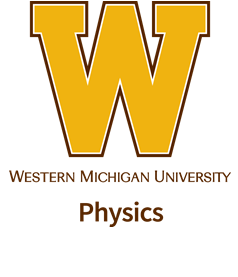Speaker
Dr
Patrick Palmeri
(Physique Atomique et Astrophysique, Université de Mons - UMONS, B-7000 Mons, Belgium)
Description
Accurate oscillator strengths for electric
dipole transitions in singly ionized yttrium
(Y II) are needed
for the determination of the yttrium abundance
in stellar atmospheres. A recent example is the
determination of the abundance ratio [Y/Mg] in
solar twins that provides a sensitive chronometer
for Galactic evolution [1,2]. Moreover, high excitation
lines have additional diagnostic value because they can
probe both non local thermodynamical equilibrium (NLTE)
and 3D effects in stellar atmospheres [3].
We report here new time-resolved laser-induced
fluorescence lifetime measurements for 22
highly excited even-parity levels in Y II.
To populate these levels belonging to the
configurations 4d6s, 5s6s, 4d5d, 5p$^2$,
4d7s and 4d6d, a two-step laser excitation
technique was used. Our previous
pseudo-relativistic Hartree-Fock model [4]
was improved by extending the configuration
interaction up to $n=10$ to reproduce the new
experimental lifetimes. A set of oscillator
strengths extended to transitions depopulating
these 22 even-parity levels in Y II is
presented and compared to the values found
in the Kurucz's database [5].
1. Nissen P. E. 2015, A&A, 579, A52
2. Tucci Maia M. *et al.* 2016, A&A, 590, A32
3. Lind K., Bergeman M. and Asplund M. 2012, MNRAS, 427, 50
4. Biémont E. *et al.* 2011, MNRAS, 414, 3350
5. Kurucz R. L. 2011, http://kurucz.harvard.edu/atoms/3901
Author
Dr
Patrick Palmeri
(Physique Atomique et Astrophysique, Université de Mons - UMONS, B-7000 Mons, Belgium)
Co-authors
Dr
Hampus Nilsson
(Lund Observatory, Lund University, Box 43, SE-221 00 Lund, Sweden)
Dr
Hans Lundberg
(Department of Physics, Lund University, Box 118, SE-211 00 Lund, Sweden)
Dr
Henrik Hartman
(Material Sciences and Applied Mathematics, Malmö University, SE-205 06 Malmö, Sweden)
Prof.
Lars Engström
(Department of Physics, Lund University, Box 118, SE-221 00 Lund, Sweden)
Dr
Pascal Quinet
(Physique Atomique et Astrophysique, Université de Mons - UMONS, B-7000 Mons, Belgium)

